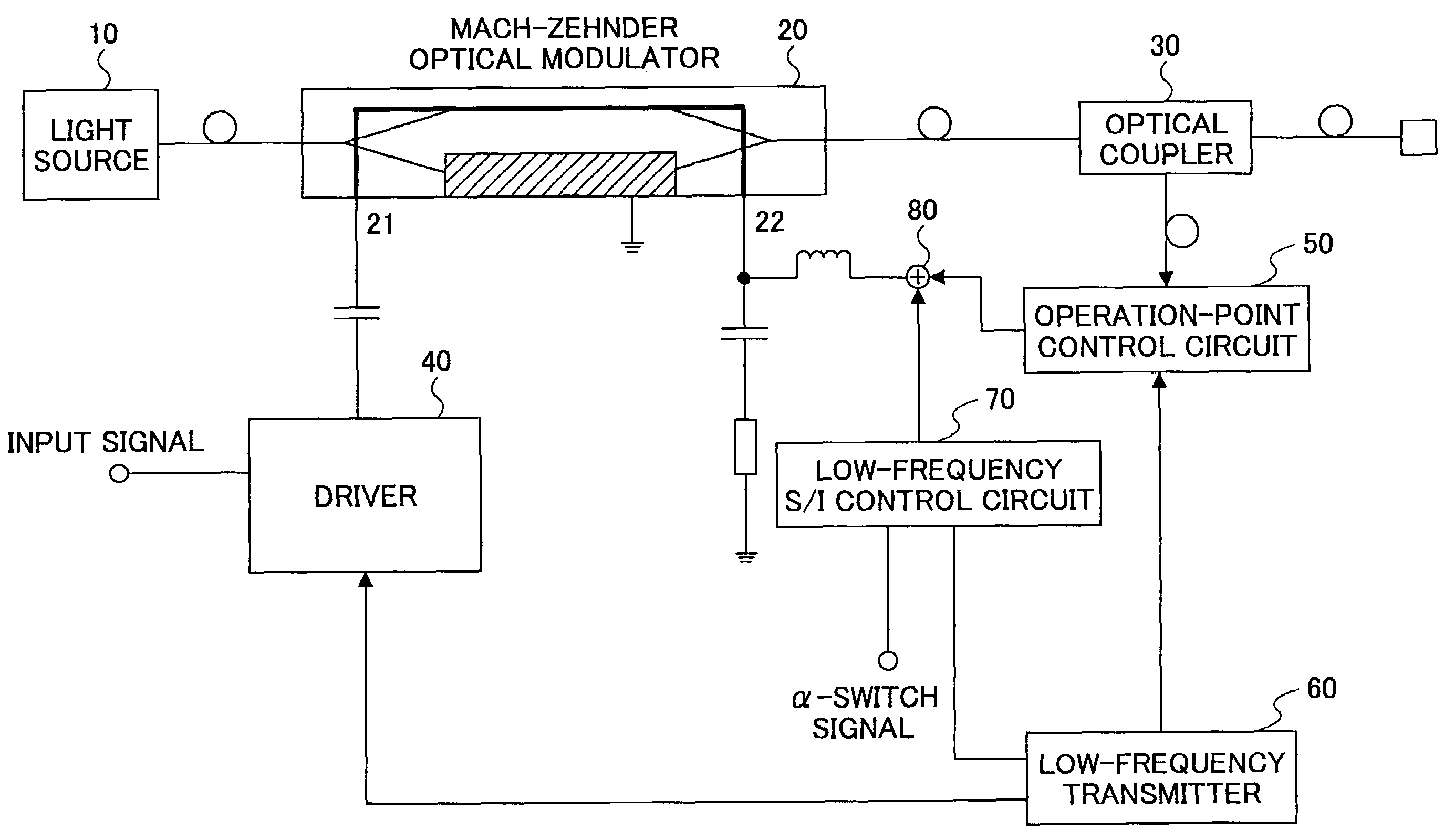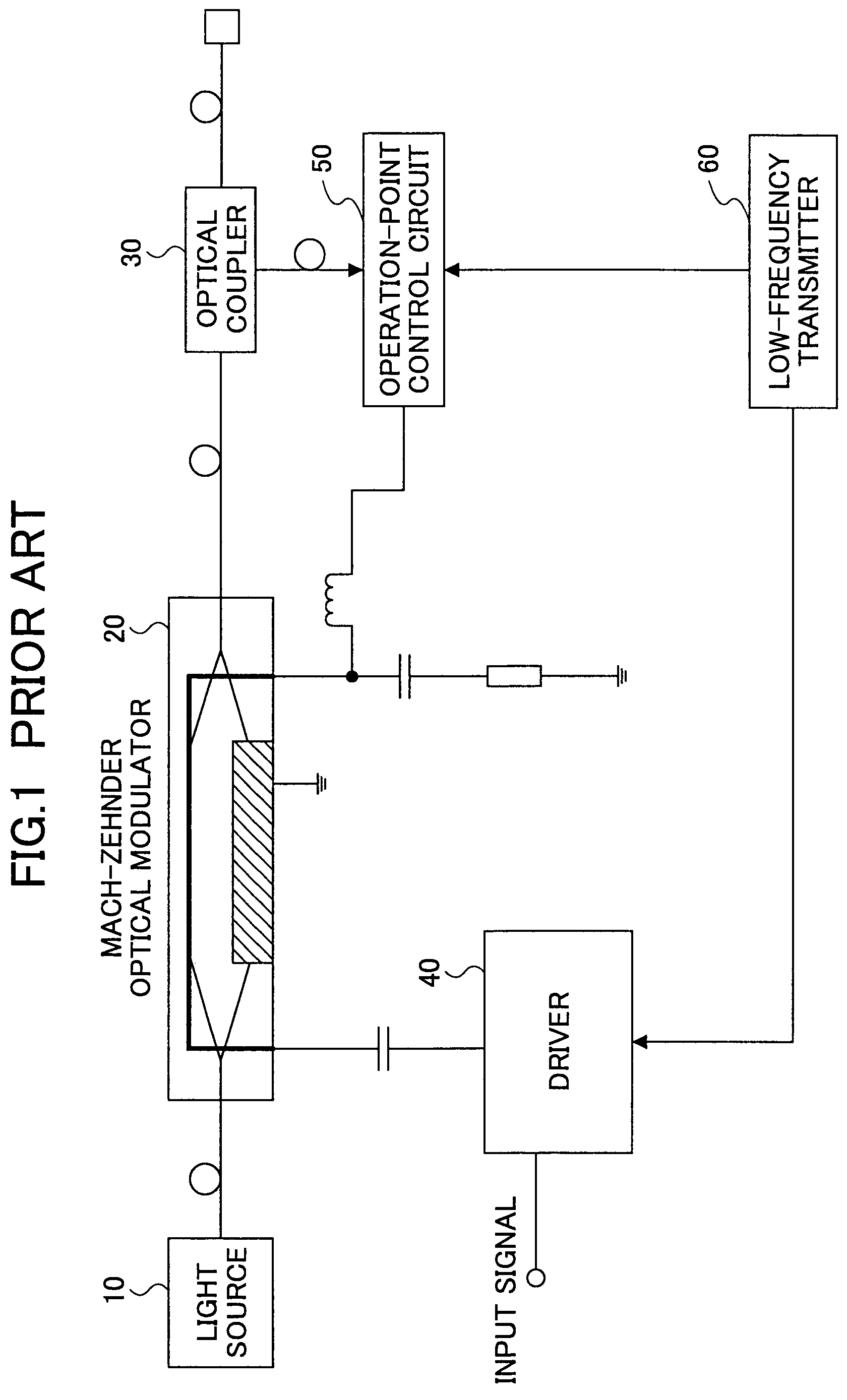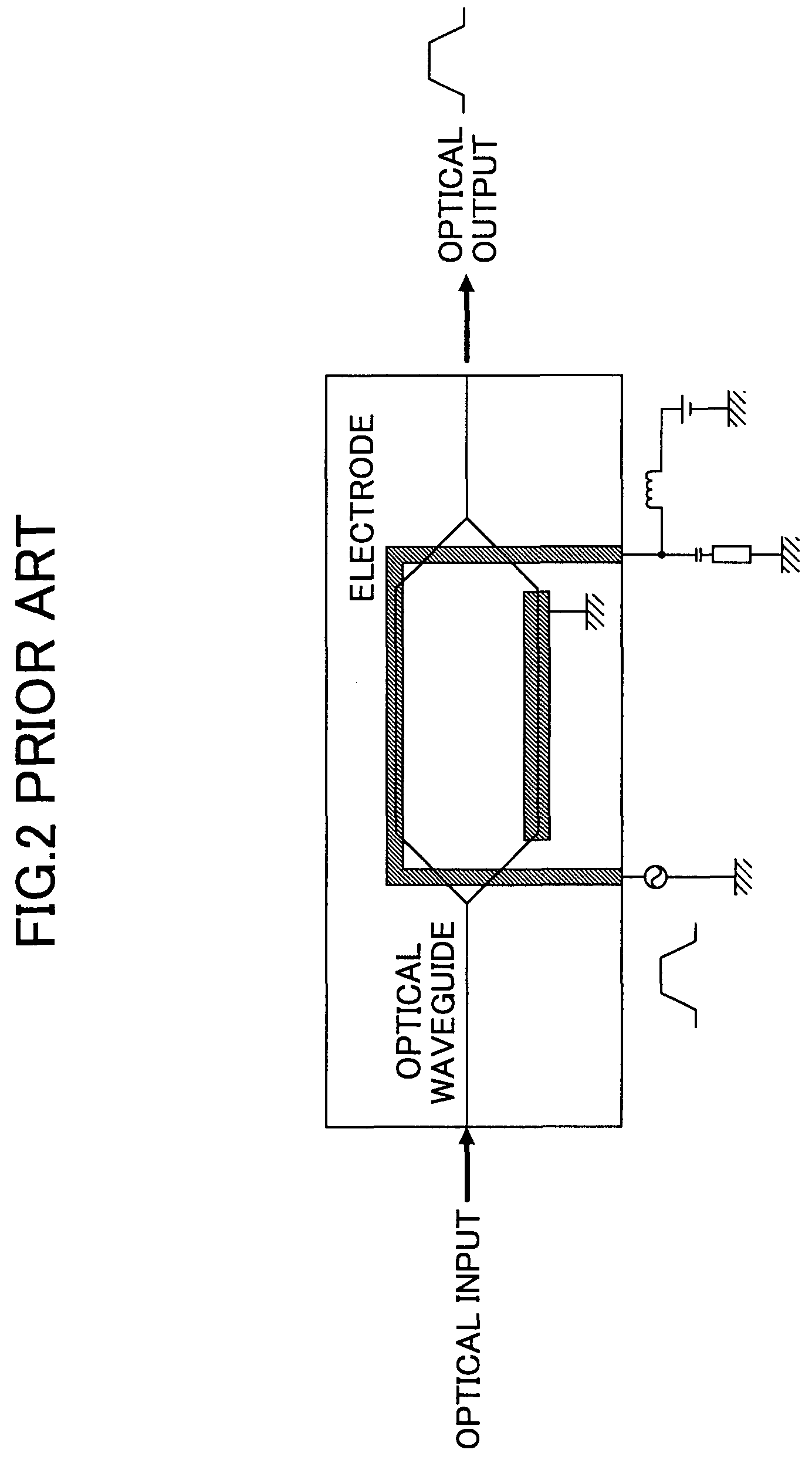Optical transmitter and its control method
a technology of optical transmitter and control method, which is applied in the field of optical transmitter, can solve the problems of poor extinction ratio ex, inability to direct modulation long-distance transmission, and large influence of dynamic wavelength variation (chirping) in the optical output signal of optical transmitter, and achieve the effect of maximizing the extinction ratio
- Summary
- Abstract
- Description
- Claims
- Application Information
AI Technical Summary
Benefits of technology
Problems solved by technology
Method used
Image
Examples
Embodiment Construction
[0041]A description will now be given of preferred embodiments of the present invention with reference to the accompanying drawings.
[0042]FIG. 4 shows the composition of an optical transmitter in the first preferred embodiment of the present invention.
[0043]As shown in FIG. 4, the optical transmitter of the present embodiment includes a light source 10 which emits a laser beam, a Mach-Zehnder optical modulator 20, and a driver circuit 40 which supplies a driving signal according to the input signal to one terminal 21 of the electrodes of the Mach-Zehnder optical modulator 20. The input signal is supplied to the optical modulator 20 via the driver circuit 40 from an external device (not shown).
[0044]The Mach-Zehnder optical modulator 20 modulates the laser beam emitted by the light source 10, in response to the input signal (the transmission signal) received via the driver circuit 40, in accordance with a predetermined modulation-characteristic curve of the optical modulator as shown...
PUM
| Property | Measurement | Unit |
|---|---|---|
| frequency | aaaaa | aaaaa |
| frequency | aaaaa | aaaaa |
| frequencies | aaaaa | aaaaa |
Abstract
Description
Claims
Application Information
 Login to View More
Login to View More - R&D
- Intellectual Property
- Life Sciences
- Materials
- Tech Scout
- Unparalleled Data Quality
- Higher Quality Content
- 60% Fewer Hallucinations
Browse by: Latest US Patents, China's latest patents, Technical Efficacy Thesaurus, Application Domain, Technology Topic, Popular Technical Reports.
© 2025 PatSnap. All rights reserved.Legal|Privacy policy|Modern Slavery Act Transparency Statement|Sitemap|About US| Contact US: help@patsnap.com



